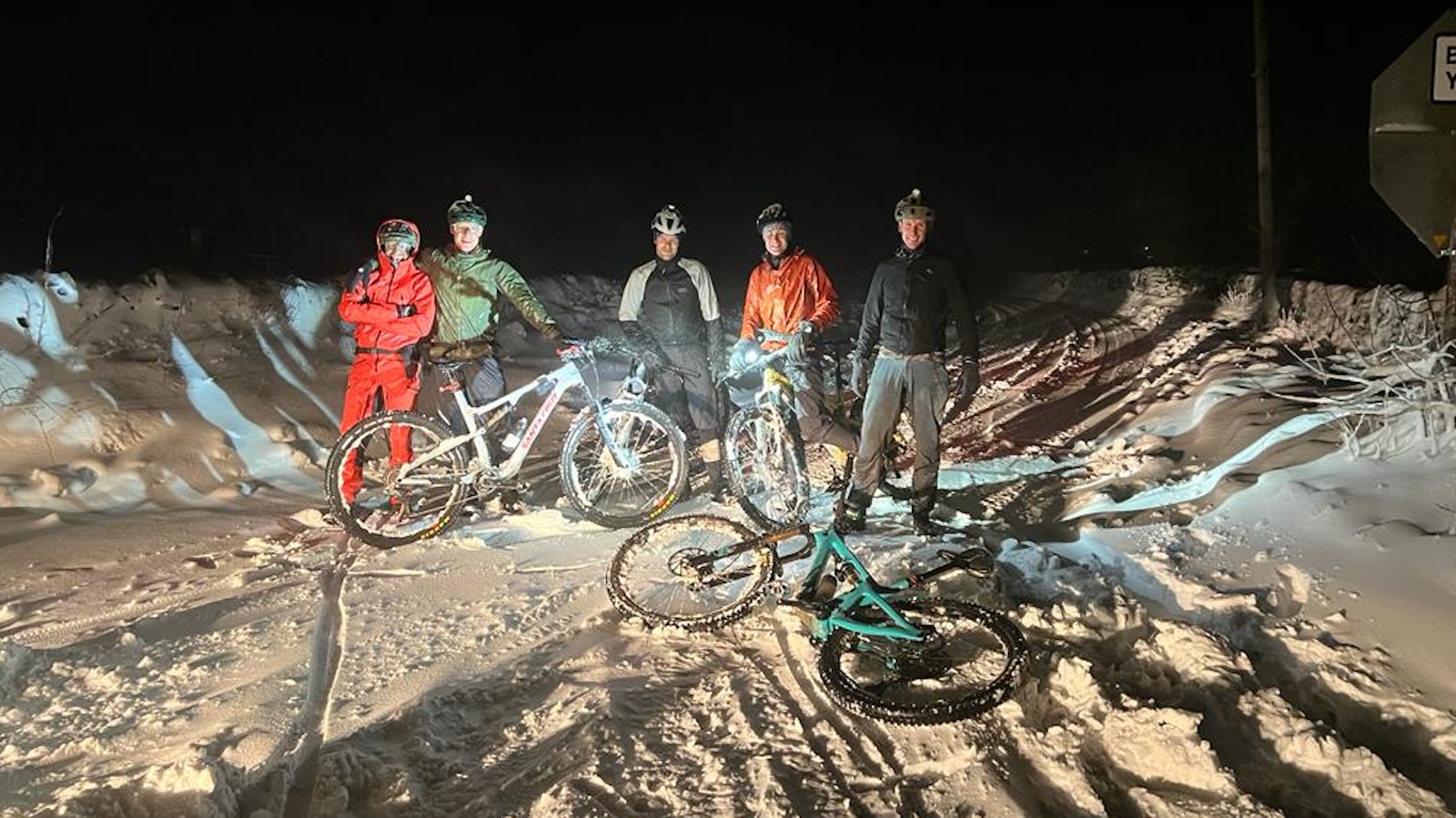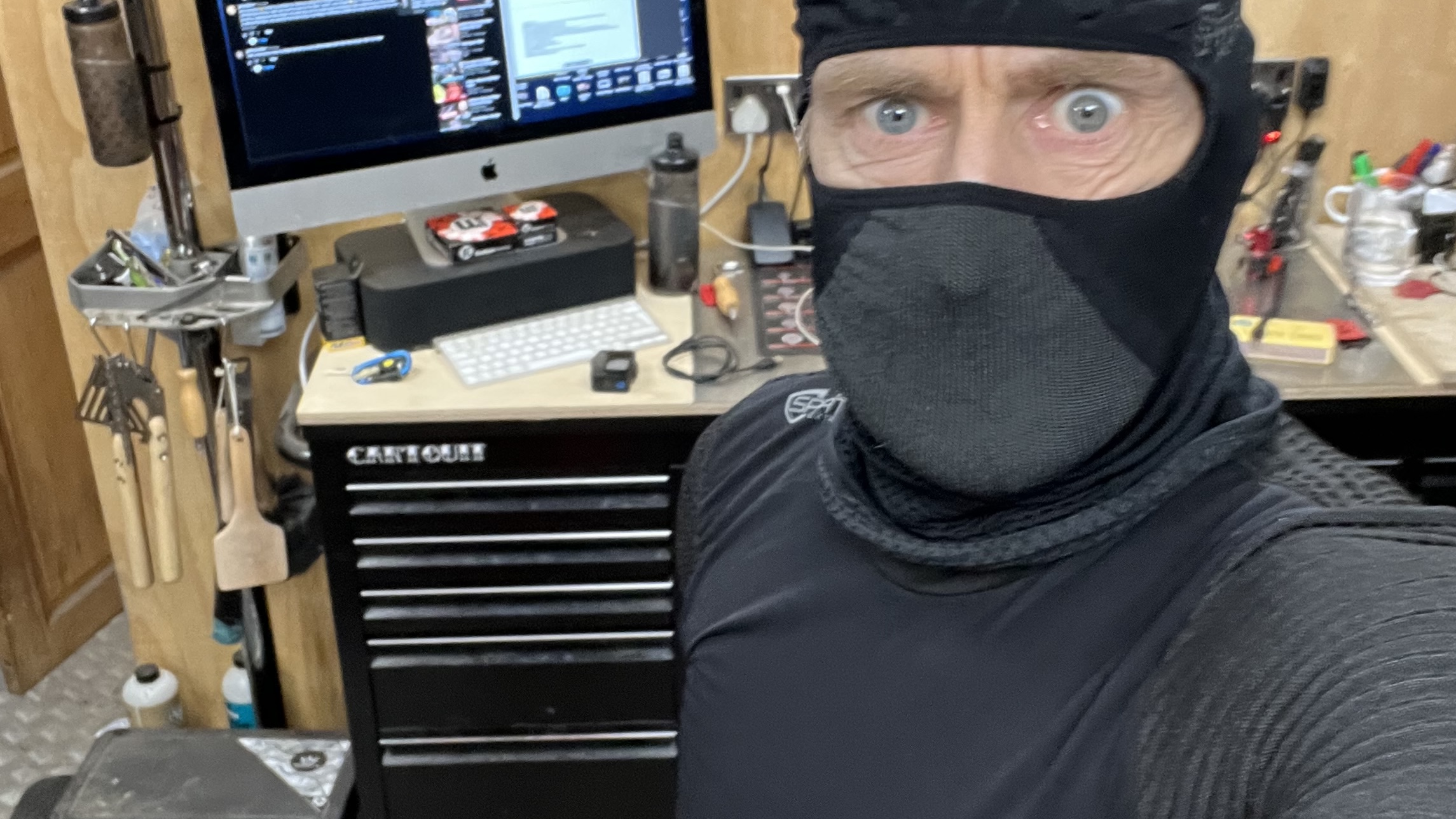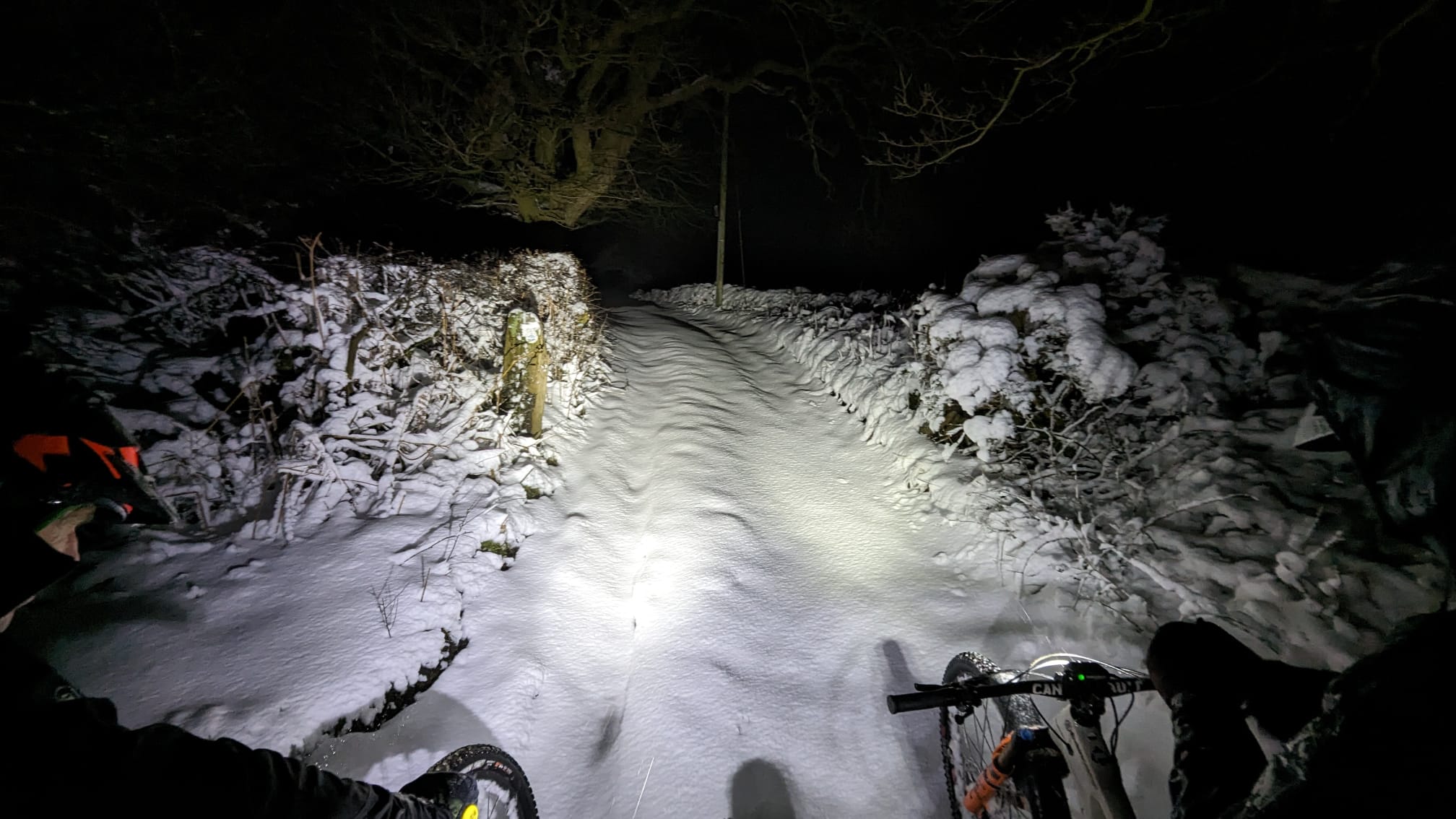Bespoken Word – was I mad choosing a dirt cheap wolf fleece over a pricey cycling jacket on a freezing night ride? Here's how it went
Is expensive bike clothing actually worth paying for? Wolf fleeces versus $330 jackets in part one of Guy Kesteven's winter of exposure experiments

I’ve been rattling on about things like how people should buy softshells not waterproofs and how wool will rarely be the wrong choice for years. I’ve also spent a lot of time this year (and I mean months in some cases) trying and failing to find the performance sweet spot of new, heavily hyped tech. As I wrote my last anguished essay about a piece of gear that had let me down, I realized that I needed to put my core temperature where my mouth was and properly research at what point really basic clothing became a comfort and potentially safety issue. So here’s my catch up on how that’s going and where I’m taking the experiments next.
Waterproofs will always make you wet
In case you missed it before, let’s go over this again. ‘Breathable’ waterproof fabrics never breathe fast enough to keep up with the amount of sweat you generate while riding a bicycle off the beaten path at a reasonable pace. Top quality (ie expensive) 50,000/60,000 WVT (Water Vapor Transmission) rate gear or branded ShakeDry, eVENT, Kinetic or Neoshell fabrics certainly does a much better job of holding off a salty trickle down your back than cheap 5-10K WVT coats. Whatever you wear though you’ll soon be stewing in your own juices. And while ‘stewing’ sounds nice and warm, that trapped sweat is soon going to get cold on descents and you’ll see your core temperature plummet faster than you can pedal.
‘Waterproof’ performance has actually got much worse recently too, due to the thoroughly eco-commendable move away from fluorocarbon / PTFE based ‘DWR’ coatings. DWR is the treatment that makes rain ‘bead’ into droplets onto the surface and roll off, but ‘eco’ DWR alternatives are proving very bad at that. And while I’m no chemist, maybe that’s because they’re designed to be water soluble, unlike PTFE ‘forever chemicals’ which definitely aren't. Anyway, the upshot is that water soaks into the outer face fabric much quicker and stays there. That not only blocks the ability of the fabric to ‘breathe’ and it also means the fabric radiates heat out much faster. So you get wetter inside while feeling colder. Not good
While fabrics like Polartec Neoshell and 7Mesh Airmap are potentially moving the right direction by adding an airflow element to their ‘breathability’ performance, they both have downsides. Neoshell is bloody heavy once it gets wet and can be chilly in really strong winds. Airmap is so ‘breathable’ that it offers very little windchill protection against serious weather and generally leaves me wondering why I even bothered wearing it. Not the question you want a $330 anorak to generate.
But hey, I’ve been banging on about for this years and because every winter clothing range or ‘winter clothing’ group test always leads with waterproofs nobody listens, so let’s move onto other stuff.

Wolf or wealth?
If you know me, you’ll realize that I’ll jump at any chance to liberate my lupine fashion tendencies. But would I die if I wore a really cheap wolf fleece (well I didn’t want to ruin any of my nice ones) on a bitter, wet and windy night over the moors rather than a ‘proper’ bike jacket? I was certainly doubting my life choices for the first ten minutes or so as the windchill tore into me like a genuine wolf pack and the ‘granthletic’ rather than ‘athletic’ cut left the bottom wide open to the breeze too. It didn’t hold off the drizzle particularly well as temperatures dropped towards freezing on the exposed high ground.
Once my body assessed the idiot decisions my brain had made and realized it needed to up it’s game though, things got a lot warmer. Sure I still needed to cross my arms across my chest to stop from freezing on longer road descents but otherwise the to and fro of heat and warmth matched that of most mid-layer fleeces I’ve used which cost up to ten times as much. By the time we were back at the pub a couple of hours and 50km later, the underdog had proved a pack leader as a I prowled about asking my poor pack pals to feel my base layer to prove that it was still remarkably dry and warm. Still, at least that was marginally more pleasant than the numerous times I’ve stomped around asking for their second opinion on how wet and cold my undergarments are – despite being allegedly protected by several $100 of high tech cloth.

It’s all about the base
Which brings me to the unsung heroes of bad weather riding comfort. Actually, scratch that, any weather’ riding comfort. Base layers, and again, they come in all sorts and prices which is a whole feature in itself. Whatever your budget or brand allegiance though, what you wear next to your skin is by far the most important part of your clothing choice. That’s because a good synthetic base layer will keep your skin dry by wicking sweat away from you as fast as possible. That cuts down heat loss massively keeping you warmer and more comfortable.
Alternatively, a good wool or wool mix base layer will still keep you warm when wet making them great for long days when you know you’re going to get soggy one way or the other. And the best thing is that a basic poly-whatever base layer is probably the cheapest piece of clothing you can buy. Despite being the most versatile and valuable, especially if you double them up to trap air between them, even merino base layers are pretty affordable if you shop around, but make sure the wool is ethically sourced to keep sheep suffering to a minimum so you keep you comfy.
Having said that, the most ‘miraculous’ clothing experience I’ve had so far this winter was in the new Basez Extreme top from Spatz. This takes their already excellent, seamless 3D woven base layer and puts a windproof/showerproof layer across the chest and shoulders. As though you’d put a donkey jacket on – if you understand references to 1970/80s picket line catwalk culture. Anyway, the result is a very close fitting but insanely warm top that generates so much heat even the most evil weather – including four degree (C) rain with enough windchill to create an ‘ice cream headache’ on descents – gets pushed back outwards. Like the overpressure system used to keep chemical weapons out of tanks – if you understand references to 1970/80s cold war heavy weaponry references. And again, my poor pals had to humor me as I skipped around the end of ride car park warm and cosy while they were wet and cold even though they’d worn full waterproof onesies for the same ride.
Something I understood even better, having made the mistake of wearing a full waterproof onesie that I had to test over the same base layer in near identical weather conditions as my ‘Basez only’ night, but finished the ride wet and freezing. Not warm and dry if slightly weirdly ribbed from the aggressive air capturing construction.

Fabric is nothing without fit
Which brings me to the final point, that again got proved within seconds of starting last night’s ride. Don’t just make sure what you wear fits, but also that the fit works with everything else you’re wearing. Last night it was waterproof trousers that looked more than long enough to keep the top of my boots covered when stood up. But then lifted to let water straight into the top as soon as I sat down and started pedaling. But the same gap in defenses disasters can easily happen with short tail jackets and low waist trousers. Or sleeves and gloves that leave a gap for cold air to whistle across the most exposed arteries in your body – the ones under your wrist – and chill your blood before it even gets to your gloves.
And going back to base layers, those clever water transferring and dissipating fibers don’t care whether they’re wicking water or sweat. Or to put it another way, if the cuff or back of your base layer sticks out of the sleeves or tail of your jacket, it’s going to suck all that weather right up and inside your coat.

What happens next?
So while I’ve had some useful learnings and confirmations so far, winter is far from over so what am I experimenting with next?
Hopefully I’ve convinced Rab to do a cut and shut job on several different jackets to see if I can tell which half works better when they’re spliced back together in odd sets. And even if I can’t, then that’s a very telling result in itself. As one of the most well known and respected mountain brands I’ll also be talking to them about how hard or easy it’s been to transfer their textile and tech experience into biking. Hopefully that’ll bring up some interesting insights that I can talk about in the next episode of ‘is expensive bike clothing worth paying for?’ And I’ll also be trying some of their non-bike stuff to see if it’s worth looking outside the box to find the best gear for the riding you do.
In the meantime, if you see my out in some weird clothing combinations it might be because I’m doing some testing. Or it might be that I just can’t be trusted to make acceptable aesthetic decisions [probably both! – Ed].

Guy Kesteven has been working on Bike Perfect since its launch in 2019. He started writing and testing for bike mags in 1996. Since then he’s written several million words about several thousand test bikes and a ridiculous amount of riding gear. He’s also penned a handful of bike-related books and he reviews MTBs over on YouTube.
Current rides: Cervelo ZFS-5, Specialized Chisel, custom Nicolai enduro tandem, Landescape/Swallow custom gravel tandem
Height: 180cm
Weight: 69kg
